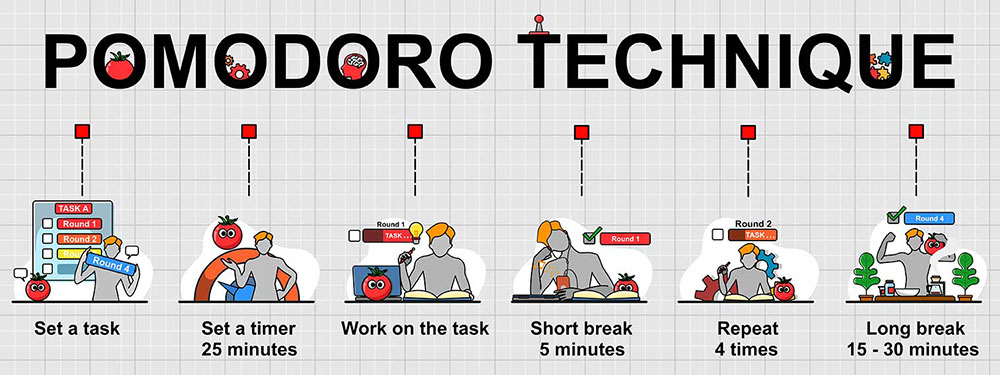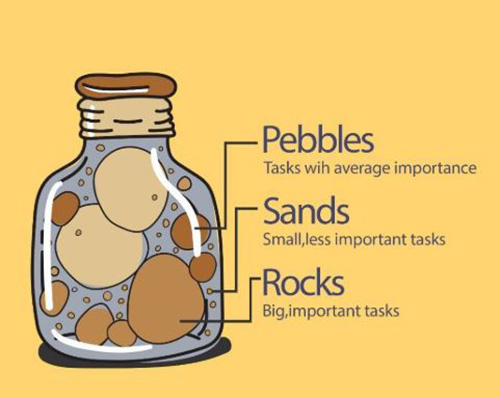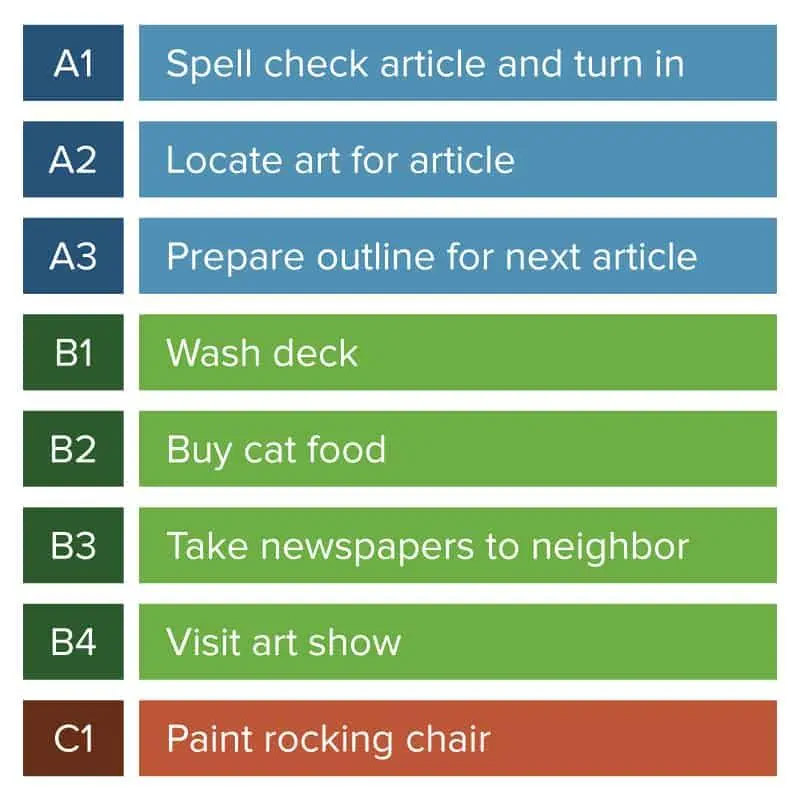Top Corporate Time Management Theories For Success
- - Category: Time Management
- - 02 Jun, 2023
- - Views: 355
- Save

Time Management is the coordination of tasks and activities that optimizes the efforts of an individual.
Time Management is the coordination of tasks and activities that optimizes the efforts of an individual. To work smarter rather than harder, one must plan ahead and consciously manage the time spent on various tasks. One may enhance productivity and achieve a better work-life balance by juggling a number of different things. Enhancing your performance and achieving your intended goals with less effort and more efficient methods is possible when you have better time management at work.
There are 7 types of Time Management. They are as follows:
1. The Pomodoro Technique is a time management technique created by consultant Francesco Cirillo that divides work into 25-minute sessions to help you stay focused and complete more. You should set a task, set a timer for 25 minutes, and work on the task till the timer goes off, once the timer goes off-check your to-do list, take a short break, and finally after every 4 Pomodoro- one should take a more extended break.

Photo Credit: https://www.stuwo.at/en/blog/pomodoro-technique/
2. The Pickle Jar Theory employs a metaphor to highlight a crucial time management principle: you must complete the most crucial things first or you won’t have time for them later. Here is the analogy: Imagine having an empty pickle jar, some rocks, pebbles, and sand on a table in front of you. Your time is represented by the jar. The rocks represent the key tasks. Pebble chores are less significant. The chores that come up randomly during your day, such as sending a text, checking your email, or taking a call, are the grains of sand. You’ll discover that you have just enough room for the necessary objects if you add the largest items (the rocks) first, followed by the pebbles, and then pour the sand in. According to the Pickle Jar Theory, you should plan your day by selecting which chores will serve as your rocks, pebbles, and sand, and then focus on completing the rocks before doing anything else.

Photo Credit: https://www.linkedin.com/pulse/time-management-pickle-jar-theory-shadav-mohammad-ansari/
3. According to Cyril Northcote Parkinson, a British naval historian, and author, “work expands so as to fill the time available for its completion.”
There is a tonne of evidence that supports this. For instance, Microsoft Japan saw a 40% increase in productivity after switching to a four-day workweek and setting a 30-minute meeting time limit.
4. The ALPEN approach was created by German economist Lothar J. Seiwert, this is how it functions: A to-do list should be made by the person the night before. They then need to calculate how long each thing will take. They should allocate 40% of their time for “buffer time”—activities like breaks and minor jobs. Set each task’s priority and use delegation when you can. Make notes throughout the day, cross things off as you finish them, and then transfer any outstanding tasks to the following day.
5. Alan Lakein, the author of the well-known book “How to Get Control of Your Time and Your Life“, created the ABC Method. It helps you to order the tasks on your to-do list in priority. The ABC Method requires you to classify chores as A, B, or C, but the majority of us simply put our duties onto a list without giving any regard to the weight of each item. One must begin with A and wait to go on to B until all of your A assignments have been completed. Box A’s subcategories A1, A2, A3, etc., can also be used.

Photo Credit: https://www.smartsheet.com/time-management-techniques

Photo Credit: https://luxafor.com/the-eisenhower-matrix/
6. According to reports, the Dwight D. Eisenhower-inspired Time Management Matrix was popularised by author Stephen Covey, who discussed it in his New York Times bestseller, “The 7 Habits of Highly Effective People”. You make a matrix and arrange your daily chores in one of the four quadrants to employ this time management technique. Its foundation is built on the concepts of importance and urgency. Something urgent needs rapid attention or action, whereas something important indicates substantial or useful. It’s imperative to keep in mind that not all chores are significant or urgent, and vice versa. The time management matrix (more on that in a moment) enables you to concurrently rank an item’s priority and urgency and sets it in the appropriate quadrant.
7. Vilfredo Pareto, an economist, created the Pareto Principle in the field of economics. But it may be used in just about any situation. The Pareto Principle states that you get 80% of your results from 20% of your daily activities in time management. Or you can boost productivity by 80% by cutting down on distractions by 20%.
Which time management philosophy or technique you follow ultimately depends on your preferences and objectives. Create and prepare your time management strategy for everything you want to accomplish, then test it out to determine which method works best for you.
Let’s try to be more efficient with the ImPerfect team.
– Urveez Kakalia and Krupa Abraham.



